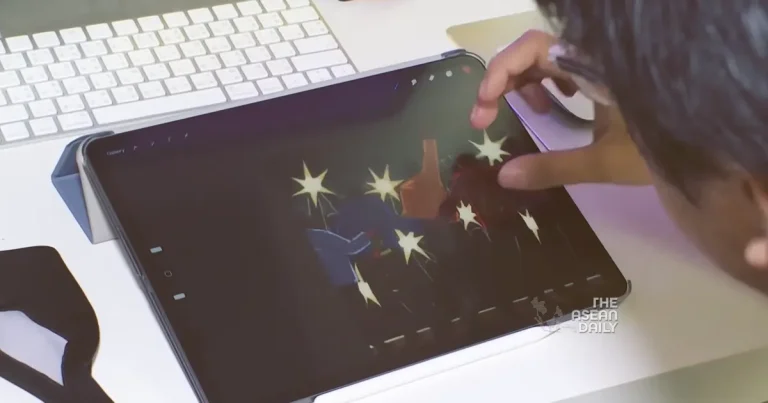31-8-2023 (BANGKOK) In Thailand, political satire has been a popular tool for expressing dissent in recent years, especially in the digital age. Many Thai creatives are using art to express their thoughts and feelings about the country’s political twists and turns, which have been particularly dramatic in recent times.
One such artist is Saratta Chuengsatiansup, who creates daily political artwork that he shares on his Facebook page, Uninspired by Current Events. He started creating political art two years ago as a way to cope with the angst he felt reading depressing news headlines every day.
Saratta’s artwork is often satirical, and he uses imagery and symbolism to express his views on current events. One of his most popular pieces features cups of a popular chocolate-mint iced concoction, associated with the Pheu Thai party, alongside a military tank. The artwork is a commentary on the political divisions in the country and the recent formation of a new government led by the Pheu Thai party.
Another artist, who goes by the name “Diamond,” also creates political artwork that is meant to spark conversations and raise awareness about political issues. His illustrations have been shared widely, including by Myanmar citizens during the recent coup in their country.
According to Thai residents, artwork like this can make politics more relatable and raise awareness about important issues. University student Sirapatsorn Thananchai said that such art pieces might urge viewers to find more background information or meaning behind them.
Thailand has a long history of using art to highlight political issues, with various forms such as music and poetry also being used. Observers believe that art evokes a different kind of response to political issues than traditional media, and social media has opened up more space for political conversations.
Assistant Professor Vichaya Mukdamanee, dean of the Faculty of Painting, Sculpture and Graphic Arts at Silpakorn University, said that art can ask questions and reveal part of a story, allowing the audience to fill in the gap. This kind of communication is different from what people receive in their daily lives, making art a powerful tool for political expression.




